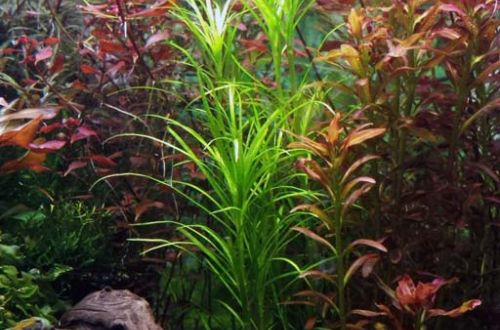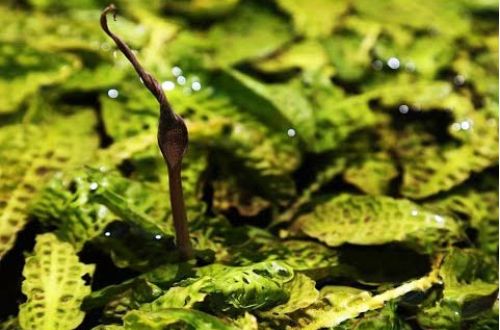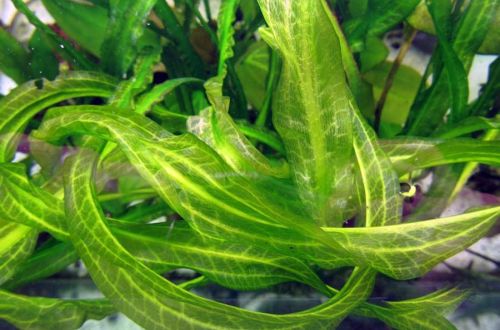
Nechamandra angustifolia
Nechamandra narrow-leaved, scientific name Nechamandra alternifolia subsp. angustifolia. It was first imported from Asia to Europe in 2005, but under the erroneous name Blyxa vietii. In 2014, botanists determined that this plant belongs to the genus Nechamandra and is a new subspecies that has not yet been described, closely related to Vallisneria.

In nature, it is widely distributed from India to the northern provinces of Thailand. It grows in shallow water in swamps, lakes, backwaters of rivers and other slow-flowing water bodies.
The plant forms long erect stems that grow from a single base – a rosette. Thin lanceolate leaves no more than 2 mm wide, 3–5 cm long. Tiny teeth border the edge of the leaf blade.
Healthy growth of Nechamandra angustifolia requires high levels of light, warm, slightly acidic, soft water, and nutrient-rich soil.





